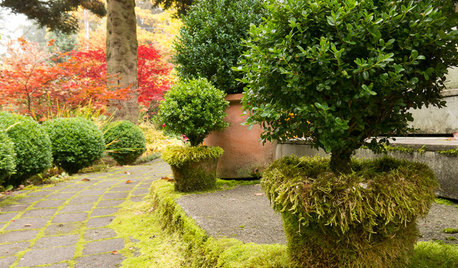I need an alternative to peat moss
trace00969
16 years ago
Featured Answer
Sort by:Oldest
Comments (19)
amany
16 years agolast modified: 9 years agoGrowHappy
16 years agolast modified: 9 years agoRelated Professionals
Owings Mills Landscape Architects & Landscape Designers · Finneytown Landscape Architects & Landscape Designers · Brookline Landscape Contractors · Canby Landscape Contractors · Costa Mesa Landscape Contractors · Fort Myers Landscape Contractors · Hawaii Landscape Contractors · Marlborough Landscape Contractors · Medford Landscape Contractors · Pleasant Hill Landscape Contractors · Rio Linda Landscape Contractors · Seminole Landscape Contractors · University City Landscape Contractors · Morton Grove Interior Designers & Decorators · Nashville Interior Designers & Decoratorsblondetazz0924
16 years agolast modified: 9 years agotapla (mid-Michigan, USDA z5b-6a)
16 years agolast modified: 9 years agoMentha
16 years agolast modified: 9 years agotrace00969
16 years agolast modified: 9 years agoMentha
16 years agolast modified: 9 years agomilwdave
16 years agolast modified: 9 years agoblondetazz0924
16 years agolast modified: 9 years agotrace00969
16 years agolast modified: 9 years agoMentha
16 years agolast modified: 9 years agotrace00969
16 years agolast modified: 9 years agorjm710
16 years agolast modified: 9 years agogaryfla_gw
16 years agolast modified: 9 years agogreenelbows1
16 years agolast modified: 9 years agomilwdave
16 years agolast modified: 9 years agotommyr_gw Zone 6
16 years agolast modified: 9 years agomocountryboys
15 years agolast modified: 9 years ago
Related Stories

LANDSCAPE DESIGN7 Low-Maintenance Lawn Alternatives
Turf isn't the only ground cover in town. Get a lush no-grass lawn with clover, moss and other easy-care plants
Full Story
LANDSCAPE DESIGNEvoke Mystery and History With Moss in the Garden
Go ahead, lie about age. Moss on garden statues, planters and pavers creates the beautifully deceptive look of time’s passing
Full Story
HOUSEPLANTSBaby Tears Mimics Moss for a Green Accent Indoors
This adaptable spreader thrives in water or soil, making it a terrific addition to containers and living walls
Full Story
MOST POPULARMeet a Lawn Alternative That Works Wonders
Carex can replace turfgrass in any spot, is low maintenance and adjusts easily. Add its good looks and you’ve got a ground cover winner
Full Story
LANDSCAPE DESIGNBoxwood Alternatives Bring the Chelsea Flower Show to You
Don’t let box blight limit your plans to borrow garden design ideas from the renowned British event
Full Story
LAWN ALTERNATIVESStop Fighting the Patchy Lawn!
Here are 3 situations where a garden may be a better idea than more turfgrass
Full Story
EARTH DAYThe Case for Losing the Traditional Lawn
Work less, help the environment and foster connections by just saying no to typical turf
Full Story
BEFORE AND AFTERSSee 6 Yards Transformed by Losing Their Lawns
Wondering whether a turf lawn is the best use of your outdoor space? These homeowners did, and they found creative alternatives
Full Story
LANDSCAPE DESIGNCalifornia Says Goodbye to the Sprawling Ornamental Lawn
New state rules will effectively limit turfgrass to 25 percent of the landscape in most new and renovated yards
Full Story
LANDSCAPE DESIGN15 Great Ideas for a Lawn-Free Yard
End the turf war for good with hardscaping, native grasses and ground covers that save water and are easier to maintain
Full Story








Mentha